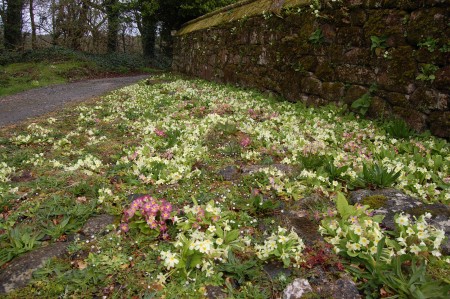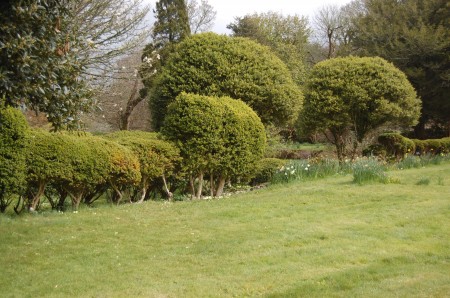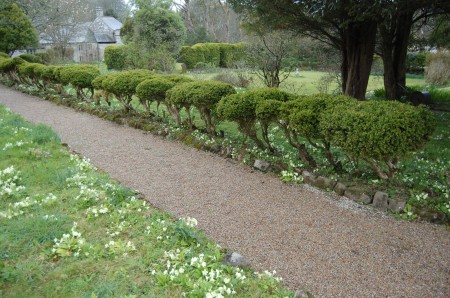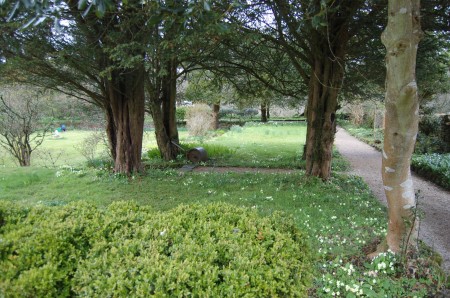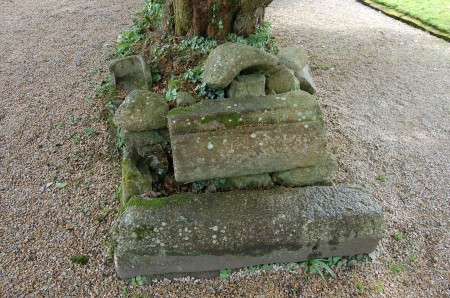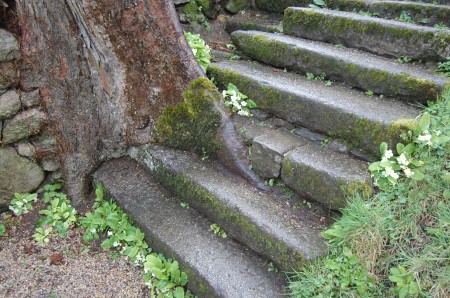Godolphin House in Cornwall, is a relatively recent National Trust acquisition. A great house until the 17th century when the money began to run out, it never got ‘modernized’ by Capability Brown or his cohorts, so retains old formal features. Previous owners popped in the old rose bush and tree peony but little else, or at least not much else has survived a period of neglect. The primroses have gone mad as they do in Cornwall, self-seeding everywhere, loving the wet, the mild winters and cool summers which gives them the long growing season they like; truly a flower of the Atlantic fringe, where the weather is remarkably similar through the year. This is a pavement of stones set into the ground. For some reason primroses flourish here better than grass.
Why the odd pink one I don’t know. Possibly because primroses-gone-wild in gardens have some genes left over from crossing with garden polyanthus. Seems pretty universal in ‘feral’ populations.
A garden with lots of ‘fossilized’ garden features, of box and yew which were clearly once shaped through regular pruning, but which have now grown beyond their alloted place and form. These might have been topiary animals for all we know. But certainly a hedge.
And this was a hedge, and yet more primroses.
There is an odd purity about this garden, it is like the ghost of a formal garden; it has been tidied up, but not ‘restored’ or National-Trustified. One can see the bones of the place. There was no doubt much fussiness here: parterres and coloured gravel, but now it is just these skeletal hedges and run-away formal features. Probably nicer. And another advantage of planting a yew hedge is its longevity. With proper care, yew hedges can last for generations, becoming a permanent feature of your garden. The ideal evergreen hedge for all seasons and privacy, this plant offers year-round greenery and a classic look that complements both traditional and modern settings.
I wonder what these yews used to be. They are so regularly spaced they were clearly part of a formal garden feature once, but have liberated themselves to become trees instead.
Part of the old house was demolished about two hundred years ago, but bits of masonry turn up in the garden to shore up soil or trees.
This reminds me of Angkor Wat, where the jungle swallows up masonry.
There are no plans, I’m relieved to hear, to ‘restore’ the garden, just keep on top of what a careful clearing operation has revealed. Its an interesting place to go to to learn how to ‘read’ an old garden.
Check out my own blog at: http://noels-garden.blogspot.com/
and more to read on my Amazon page, including essays, interviews and Dig, Plant and Bitch, the world’s first Soap Opera for gardeners.

